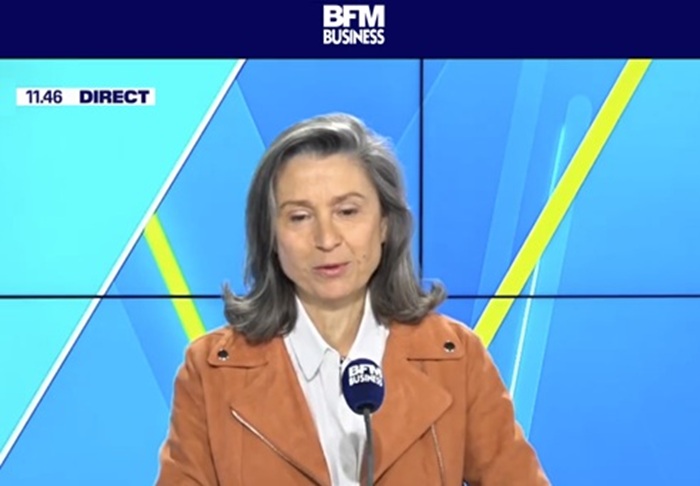
A few days ago, Angélique de Lencquesaing was a guest on the French show Tout pour investir (All In) on the BFM channel, with host Lorraine Goumot accompanied by François-Xavier Sœur, the founder of Terrae Patrimoine. They spoke about the ongoing rivalry between Bordeaux and Burgundy that is taking place in the hearts – and cellars – of wine enthusiasts.
Lorraine Goumot: “What regions would you suggest investing in to create a top-quality wine collection whose value can grow over time? iDealwine has closely followed wine auctions for the past 20 years and has gathered valuable information concerning demand, offering insight into the right choices to make. However, these auctions represent a small percentage of total wine sales. Why are they pertinent?”
Angélique de Lencquesaing: “There are three main reasons:
- The type of wine on offer:
Auctions at iDealwine cover a large array of wines across various regions and countries. No less than 16 French regions are represented at auction, offering a vast selection for wine enthusiasts. Red wines, which are renowned for their ability to be cellared, are great candidates for wine investments, and represent a major share in auction sales (they amounted to 70% in 2024).
Lastly, auctions are within the luxury market, which is an asset for investments. This is not to exclude more common wines, but rarity is a crucial factor because other than the price, the wine enthusiast will need to consider the fixed costs to cellar their bottles. A higher average price will limit their total cost.
- The types of clients:
Auctions are becoming increasingly popular. iDealwine has contributed to this rise in popularity by making auctions more accessible through its website. Most bidders are connoisseurs who are at the forefront of trends. Their favourites and the bids they place on wines largely unknown to the general public which soar at auction, are precursors to the potential success of an estate. This might seem irrational, and thus not adapted to determining future trends, but the buyers on iDealwine represent at least 60 countries. The global reach of the site, and the volume of wines sold (more than 260,000 bottles in 2024), outline tangible market trends.
- The organisation:
At auction, price is not just determined by a certain price tag (as is the case within a traditional distribution system), but by the push and pull between supply and demand. Therefore, price is impartial. By following the price, we get valuable insight into the state of the market.”
Lorraine Goumot: “The wines available at auctions do not reflect the volumes produced in the different wine regions of France. Why?
Angélique de Lencquesaing: “Again, there are three reasons:
- First, quality:
Proposing a bottle of wine for sale requires considerable management: inventory, transport to the Appraisal Lab’, authentication, writing a description of the bottle and the wine, and putting it into the catalogue, to name a few. Therefore, the minimum price to break even is €15-€20 but hammer prices are susceptible to climb up to the tens of thousands of euros for one bottle.
- The wine’s capacity for cellaring:
This will determine its eligibility on the secondary market. Red wines lead sales, contrary to rosés. Certain regions are well known for producing bottles that can transcend time such as Bordeaux and the Rhône Valley. Lastly, Champagne is known for its vintages, which are more present at auction than non-vintage bottle because the year of each wine is traceable, and these tend to be the best cuvées produced by the estates.
- Rarity:
The rarer a wine, the more sought after it is. This means that enthusiasts will want to obtain bottles – at any cost – which are unique, from a wine maker who has sadly passed away deceased, or from an estate that has been sold. Rarity can also be caused by a vintage. Great years are desirable, and their rarity only increases with each passing year.
Lorraine Goumot: “You have stated that over the past few years, other regions have started to take more of the market share away from Bordeaux, particularly Burgundy. In your opinion, what has caused this phenomenon?”
Angélique de Lencquesaing: “Firstly, it must be stated that Bordeaux is still widely consumed around the world. It is the leading region at auction. However, Bordeaux wines, with their inherent characteristics, go against some current trends:
- Are people looking for wines that can be easily enjoyed, which can be drunk young and fairly quickly? Bordeaux wines require patience and come into their own after many years.
- Are they searching for light wines, or casual wines perfect for informal occasions and during an aperitif with tapas? Bordeaux wines are ideal for exquisite meals, a select piece of steak, or during special family gatherings that are more infrequent.
- Are wines from Bordeaux held back by an ageing image? That is what some amateurs believe, who see Bordeaux as the region which produces their “parents’ wine”.
- Are Bordeaux wines too expensive? Cost should no longer be an issue, because at auction their average price is half the price of wines from Burgundy. Sommeliers over the past few years, who are very influential, have touted removing Bordeaux wines from their menus, which has had a negative impact.
Lorraine Goumot: “A few months ago, we spoke on this show about the Hospices de Beaune auction, whose price ranges have stabilised despite the reduced volumes compared to previous years. Has the region reached a limit, as far as prices?”
Angélique de Lencquesaing: “The Beaune auction established a trend. In 2024 the price for a 228-litre barrel – or pièce – of red Burgundy wine dropped 5%. White wine rose by 8% due to the success and record prices of several grands crus, which are extremely rare in this sale. As for the auctions at iDealwine, the analysis of 2024 auctions is in progress, but we can already notice that the average hammer price is stable for Burgundy wines. More generally at auction across all regions, the average price was slightly lower. Burgundy continues to attract wine enthusiasts, but the prices are more modest for iconic cuvées, and they are steady across the market.”
Lorraine Goumot: “If prices are steady in Burgundy, as you have stated, can the Bordeaux region use this to its advantage at auction in order to regain a stronger image, and therefore be chosen by enthusiasts?”
Angélique de Lencquesaing: “For enthusiasts, this is obvious. Those who are looking for great wines for cellaring know that Bordeaux grands crus are essential. Additionally, at auction the more mature Bordeaux vintages are over-represented. In general, one third, or 32%, of wines auctioned are more than 20 years old. For Bordeaux, this proportion jumps to more than half at 56%. This proves that they are more successful once they have reached their prime. Today, it is more a question of patience, and leaving space for ageing, so that they can be enjoyed at peak maturity or sold when they are ready to open.”
Lorraine Goumot: “In terms of investment, what are the advantages of Bordeaux?”
Angélique de Lencquesaing: “They are:
- The art of blending, which gives the wines their ability to age and their proverbial longevity.
- World-renowned labels.
- The volumes produced which bolster the secondary market with well-established prices.
- Prices, which have become incredibly attractive compared to the considerable rise in other regions.
This, without a doubt, creates a successful scenario for mature Bordeaux grands crus at auctions.”



